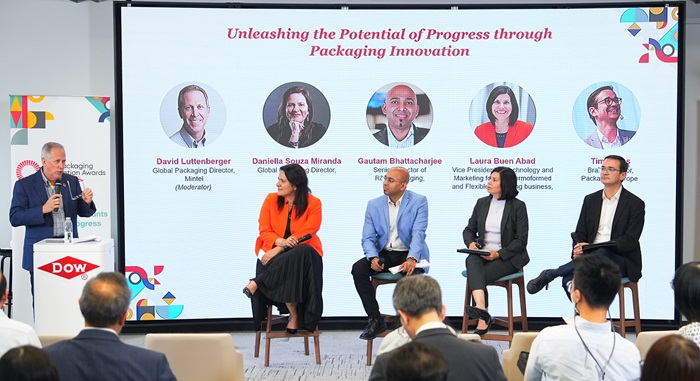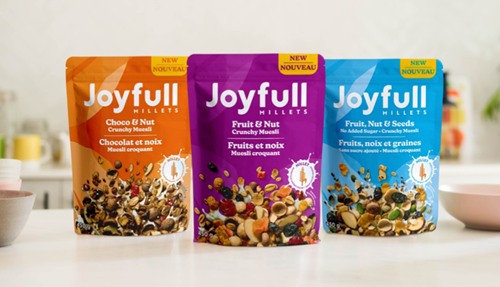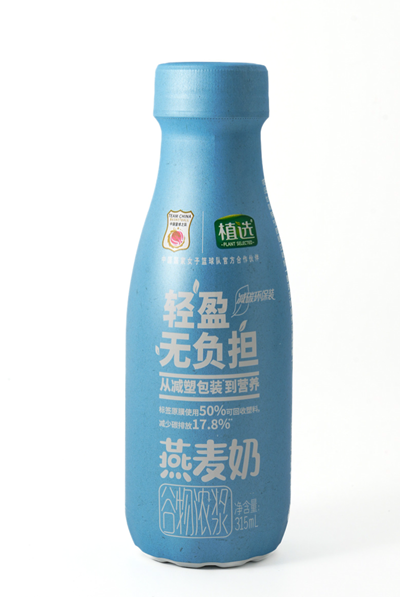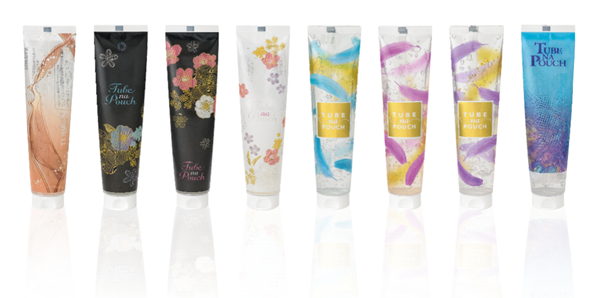The world of packaging is evolving, with new technologies and materials enabling designs to meet both changing consumer habits and industry regulations. From the hundreds of entries vying for the top accolade in the Packaging Innovation Awards (PIA), one of the packaging industry’s premier competitions for over 30 years and the longest running independently judged awards created for and by the packaging industry, we gain a glimpse of the key trends shaping packaging.
In June this year, 18 of the world’s top leaders across the packaging value chain convened in Bangkok to lend their expertise to identify the next generation of innovative packaging solutions that will help shape the future of the industry.
These industry judges represent cross-disciplinary leadership across various fields, including business and strategic planning, design, technology and R&D, sustainability, and academia. The panel also lends extensive knowledge in marketing and branding, retail, customer experience, product development, packaging engineering and performance, and process and systems development.
Evaluated for their breakthroughs in technological advancement, sustainability and enhanced user experience, the finalists were announced in August.
As the jury proceedings came to an end, the judges and an expert from Dow came together to unpack the future of packaging innovation in a media event.
In her keynote speech at the event, Daniella Souza Miranda of Dow stressed that Asia Pacific is home to 48.5% of the world’s manufacturing output, and as so has become the center of innovation, particularly when it comes to material use and production speed.
Mega trends such as urbanization and the rise of the middle class in the APAC offer diverse design opportunities, she said. With consumers in the region purchasing goods in smaller and more affordable portions, convenience packaging remains the most popular format, with about 80% of products sold in sachets, pouches and refill packs.
What makes a winner?
“Packaging and product should work together in harmony from the user’s perspective, and it has to suit their lifestyle,” said David Luttenberger, the lead judge for the Packaging Innovation Awards, and currently the Global Packaging Director at Mintel. Innovating is the only way to bring progress, especially to the packaging industry, he said.
By utilizing both new and existing technologies, the packaging industry has heightened its efficiency and productivity. This is evident from the beginning of idea creation to label content development and to R&D processes, all of which enhance design as well as speed to market.
This is seen in one of the finalist entries for the PIA, by CJ CheilJedang. It has further innovated its Hetbahn® tray for cooked rice by adopting the use of bio-circular materials in a process not commonly used in microwavable packaging. Based on CJ CheilJedang’s calculation, this packaging with 25% ISCC Plus certified bio-circular materials reduces carbon emissions by 17% (approximately 12.7 tons per year) and paves the way for the expansion of such applications within Korea and globally. The improved Hetbahn® packaging blocks oxygen and bacteria, and coupled with an aseptic packaging process, can be safely distributed at room temperature with a shelf life of 9 months.
In a panel discussion, selected jury members discussed key observations about the future of packaging. These jury members include Gautam Bhattacharjee, Senior Director of R&D Packaging, P&G; Laura Buen Abad, Vice President of Technology and Marketing for the Thermoformed and Flexible Packaging business at Sonoco; Tim Sykes, Brand Director, Packaging Europe; Daniella Souza Miranda, Global Marketing Director, Dow, and David Luttenberger, Global Packaging Director, Mintel.
They discussed how predictive learning and generative AI are tools revolutionizing packaging in many ways. Materials can be chosen based on material availability, cost, as well as recycling infrastructure, while data analysis allows easier prediction of material and customer needs.

A panel discussion with jurors, on how packaging innovation drives progress (From left) David Luttenberger, Global Packaging Director, Mintel; Daniella Souza Miranda, Global Marketing Director, Dow; Gautam Bhattacharjee, Senior Director of R&D Packaging, Procter & Gamble; Laura Buen Abad, Vice President of Technology and Marketing for the Thermoformed and Flexible Packaging business at Sonoco; and Tim Sykes, Brand Director, Packaging Europe.
On material options, developments in enhanced mono materials have pushed the envelope for the packaging industry, enabling ease of recyclability from collection and reprocessing to the production of reusable post-consumer recycled packaging. For industry operations, the shift to mono material is creating scalability, improving price structures, and enhancing consumer experiences, according to Dow. It also enables companies to align with packaging regulations.
Furthermore, collaborative efforts and partnerships within the value chain are critical to advancing the goals of the packaging industry. These have given life to many of the advances that consumers enjoy today, such as food-safe recycled plastics, lightweight bottles, and so on.
What is the packaging innovation that will take the crown this year? Dow will announce the Diamond winner, the top accolade, as well as winners for the Silver, Gold, Platinum and Special award winners at the awards ceremony held at Tokyo Pack on October 24.
PIA finalists in the food and beverage packaging category

AmPrima® PE Plus for Coffee
By Amcor with Kjeldsberg
Leveraging Amcor's AmPrima® PE Plus – a recycle-ready packaging – Kjeldsberg offers their customers a coffee packaging solution that is easily recyclable. The AmPrima® PE Plus pack moves away from a three-layer structure containing PET, polypropylene, and polyethylene to a mono-polyethylene solution. In addition to being recyclable in the polyethylene stream, the packaging also boasts a 68% reduction in carbon emissions, as proven by Amcor's ASSET tool, certified by Carbon Trust.
Designed in accordance with the Circular Economy for Flexible Packaging (CEFLEX) guidelines, it is readily recyclable in most European countries and certified for recyclability by Institute cyclos-HTP.

BarrierFlex NutVault – Plastic Packaging Bag for Nuts
By Packaging Industries Limited
The introduction of a fully recyclable high-barrier ethylene-vinyl alcohol copolymer (EVOH) bag marks a major advancement in bulk packaging for Kenya's leading exporters of cashew and macadamia nuts. This 110-micron bag replaces non-recyclable structures like PET//AL foil//PE, BOPA//PE, and PET//METPET//PE, addressing critical challenges such as flex cracks and decreased effectiveness in oxygen and moisture barriers.
The elimination of aluminum foil and metalized PET significantly extends the shelf life, enhances product protection, and reduces the need for repacking upon arrival. The use of high-performance polymers in the bag’s construction improves durability during transportation, ensuring product integrity and freshness. Its design seamlessly integrates into existing pouching machines, streamlining production by eliminating the need for lamination, thereby reducing costs. Additionally, the metal-free nature of the packaging allows for enhanced safety through metal detection, a feature previously impossible with aluminum or metalized PET structures, thus improving quality control.
This innovative packaging solution reduces dependency on imported films and lamination materials, promotes sustainability, and optimizes resource utilization. The industry minimizes material imports and waste by transitioning to a simplified 110-micron PE pouch, contributing to economic self-sufficiency and resilience.
Overall, the fully recyclable EVOH bag offers improved shelf life, enhanced safety, and significant environmental benefits, representing a transformative step in the export packaging of cashew and macadamia nuts.

Cioccoriso Perugina – Plastic Bottle for Chocolate
By Nestlè Italiana Spa
This innovative packaging for chocolate-covered puffed rice produced in collaboration with Nestlé Italiana and Barry Callebaut is a prime example of holistic design thinking. From its cap and accompanying liner to the bottle and its label, this packaging has been meticulously designed to become fully recyclable. Central to this is its anti-tampering tape, which replaces the commonly used unrecyclable laminate membrane with a monopolymer version. The same material is used for its cap, ensuring that the whole product can be conveniently introduced into the recycling stream.
In addition to featuring a recyclable polyethylene terephthalate bottle, the new polypropylene label on the jar is also compatible with recycling processes, improving upon the previous paper label that would be difficult to recycle.
The recyclability assessment is based on the packaging lists for fee modulation based on recyclability, provided by CONAI (Italian EPR consortium for packaging recycling).

EcoLamHighPlus – Polyethylene-based Fully Recyclable Pouches for Breakfast Cereals
By SB-Constantia Flexibles India
The EcoLamHighPlus barrier packaging solution is designed for the circular economy while protecting product integrity to ensure longer shelf life.
Using mono-polyethylene (PE) laminates is a challenge in the packaging industry, but SB-Constantia Flexibles has created a sustainable solution that replaces the multipolymer packaging conventionally used by consumer brands while maintaining 18 months of product shelf-life. It also has outstanding aesthetics with a registered matt finish.
Ensuring that sustainability benefits did not compromise packaging aesthetics was a vital part of this project. The SB- Constantia team worked with the brand owner to achieve a packaging structure that delivers an easy tear opening, long shelf life, good aesthetics and fulfills all packaging requirements. The product was launched in the UK last year.

Heat-shrink Labels from Recycled Light-blocking PET Bottles
By Inner Mongolia Yili Industrial Group Co., Ltd
Using recycled light-blocking PET waste bottles from its other product lines, Inner Mongolia Yili Industrial Group produced heatshrink labels for its Plant Selected oat milk product, creating a closed-loop recycling process of its packaging materials without altering the label’s performance or existing production processes.
Leveraging mechanical and advanced recycling processes as well as advanced modification technology to solve shrinkage and color issues, the white shrink labels are made with 50% recycled content from bottles that contain a light-blocking agent. This results in a carbon reduction of 17.8%, helping Plant Selected become the first plant protein brand in China to obtain the Bureau Veritas carbon footprint label.
This innovative use of recycled plastic also marks the first application of label recycling technology to light-blocking bottles in the dairy industry.

Hetbahn® with Bio-Circular Packaging
By CJ CheilJedang Corp
CJ CheilJedang has further innovated its Hetbahn® tray for cooked rice by adopting the use of bio-circular materials in a process not commonly used in microwavable packaging.
Based on CJ CheilJedang’s calculation, this packaging with 25% ISCC Plus certified bio-circular materials reduces carbon emissions by 17% (approximately 12.7 tons per year) and paves the way for the expansion of such applications within Korea and globally.
The improved Hetbahn® packaging blocks oxygen and bacteria, and coupled with an aseptic packaging process, can be safely distributed at room temperature with a shelf life of 9 months.

Ice-cream Packaging Box to Create a DIY “Pino Gacha”
By Morinaga Milk Industry Co., Ltd with TOPPAN Inc.
The 'Pino Gacha' ice-cream packaging promotes consumer engagement. When consumers purchase two boxes of ice-cream, the two cardboard boxes can be transformed into the “Pino Gacha”. Consumers can then spin the “Pino Gacha” and be surprised by the ice-cream flavor that is dispensed at random.
Not only is it a fun bonding activity for families, but this creative marketing tactic leverages packaging innovation to encourage greater sales, as consumers need to purchase two boxes of ice-cream to participate.
Additionally, by reusing the packaging, it can be transformed into an interactive family activity instead of being disposed of.

Inikin Brew-on-demand Tea Beverage Packaging with Freshness Retaining Cap
By Inner Mongolia Yili Industrial Group Co., Ltd (Yili Group)
The Inikin Freshly Brewed Tea bottle offers consumers convenience in enjoying a bottle of freshly brewed tea, made possible with a one-step twist opening cap that is easy to turn and activate. This design breakthrough is set to reshape the rapidly expanding sugar-free tea market.
Featuring a patented tea-water separated freshness-retaining cap that blocks light and oxygen, the Inikin Freshly Brewed Tea bottle can preserve the freeze-dried tea powder's quality, addressing challenges such as flavor degradation and color changes that might occur during storage.
This unique cap – comprising an upper cap, lower cap, and cutter connected by threads and guides – is sealed with aluminum foil for airtight storage. Featuring high moisture resistance for a longer shelf-life, the cap also provides a smooth and seamless opening process, adding to an already enhanced customer experience.

Macada – Paper Box for Macadamia
By Starprint Public Company Limited
Macada’s paper box for its macadamia nuts is designed with inclusivity in mind, applying universal design principles. Braille letters have been added to the points of opening to facilitate access for the visually impaired. The use of a zipper perforation allows the box to be easily opened, allowing elderly consumers to open the box independently. For this audience, careful consideration was made in color selection and application across the packaging to provide greater legibility.
Convenience is another key feature of this box – its front panel can be extended, transforming the packaging box into a container that consumers can dispose of macadamia shells in. Meanwhile, product quality is preserved by vacuum sealing the macadamia nuts. The transparent window cut into the carton also facilitates product visibility. Made of kraft paper, the box is also 100% recyclable and naturally biodegradable. Soy ink, which is made from natural raw materials and is food-safe, is used for printing.

Paper Based Packaging for Spreads
By Upfield
Upfield developed a first-of-its-kind paper tub for its plant-based butter and spreads. The paper tub does not contain any conventional plastic content, and is durable, recyclable and made of PEFC certified fibers.
Using wet molded fiber technology and molded fiber labeling, the paper tub is leak-proof, food safe, recyclable, and aesthetically pleasing. Most importantly, this paper tub can retain the product quality, just like its predecessor.
The packaging also facilitates engagement with consumers, featuring a QR code on the cover within the tub, which allows consumers to learn about how it is more environmentally friendly.

Reciplus – Cafe Sello Rojo Mono-Material Coffee Packaging
By Alico SAS BIC
Reciplus represents the application of such mono-material innovation to a mass-consumer product and is the first of its kind in Colombia.
The Reciplus packaging by Alico SAS BIC for Sello Rojo was developed using state-of-the-art high-density polyethylene, providing rigidity and an excellent water vapor barrier, along with other characteristics such as sealability, optical properties, and mechanical strength.
The packaging’s raw materials also allow it to achieve water vapor and oxygen barriers similar to those found in laminated structures with metallized polyester or metallized bi-oriented polypropylene. As a result, this packaging reduces or can even eliminate the lamination process, leading to lower consumption of energy and raw materials.

‘Tube Pouch’ Plastic Tube Container for Food and Cosmetics
By TOPPAN Inc.
TOPPAN's ‘Tube Pouch’ plastic tube container for food, cosmetics, and other products combines tubular and flexible packaging technology to significantly reduce plastic usage for packaging, while improving usability. Compared to conventional laminated tubes, this resealable tubular container boasts over 30% plastic reduction and allows the contents to be easily squeezed out.
The special structure of the tubular container also makes it easy for users with limited strength, such as children and seniors, to completely squeeze out the contents.

26mm Lightweight Water Closure Beverage Cap
By Alltrista
Alltrista has produced ultra-light 26mm caps (0.74 grams) without reducing the cap’s profile, which might otherwise affect the user’s grip of the cap. Alltrista has been able to balance the reduction of materials used while increasing the depth of the caps. The company’s manufacturing technology preserves product quality while achieving sustainability and efficiency targets.
Alltrista has the highest cavity molds (128 cavities), the lowest cycle times (1.9 seconds), the lightest caps, and the smallest manufacturing cell footprint. The company utilizes the latest energy-saving infrastructure support systems with Variable Frequency Drives (VFD’s) on all its electric motors. This results in approximately a 12% reduction in energy consumption per cap produced.
This manufacturing technology, coupled with high speed, 100% physical and dimensional inspection, guarantees quality for customers, resulting in lower downtime and improved productivity.
Click here for the complete list of finalists














